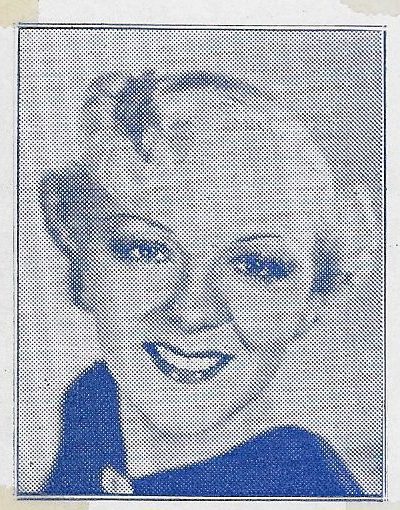Esther Muir
ActressBiografía
The statuesque American comedienne Esther Muir was a former New York model, who started in the chorus line of the 1922 “Greenwich Village Follies” on Broadway, straight out of high school, and with little or no theatrical training. She caught the eye, however, since her effort led to further work on stage, including “Battling Butler”, opposite Charles Ruggles. There, she found herself in the role of the comic foil for the first time. In 1929, she followed an acclaimed performance in the Broadway production of “My Girl Friday” with further work in musical comedy for Lew Leslie’s International Revue, alongside such luminaries as Gertrude Lawrence. Noted choreographer Busby Berkeley, who had worked on some of the dance numbers for the show, was introduced to Esther backstage by the columnist Walter Winchell. Esther subsequently married Berkely and accompanied him to Hollywood, after he had been signed by producer Samuel Goldwyn. The union was, however, short-lived. Esther later claimed, that Berkely needed a mother more than he needed a wife. While already in Hollywood, she began acting on screen in feature films and two-reel comedies. Soon typecast, she became the obliging comic foil to Bert Wheeler and Robert Woolsey in the spoof So This Is Africa (1933), and to Fanny Brice in The Great Ziegfeld (1936). Often, she was given good wisecracking lines to deliver. Her most pivotal role, of course, was as the slinky, seductive Flo, doing the villain’s bidding to discredit the “moth-eaten Romeo” (Dr. Hugo Z. Hackenbush, played by Groucho Marx) in A Day at the Races (1937)(having already toured with the part on stage). In one of The Marx Brothers most anarchic (but memorable) scenes, Esther’s Flo gets her comeuppance by being covered in paste and wallpaper (stills suggest, that the Marxes took Esther’s pasting a lot further, than was played out in the released film version, but this was cut from the final print). Esther took it all in good humour and was a willing participant in the pranks played on set. Groucho’s droll caption of a picture in “The Groucho Phile” (p. 144) reads: “Esther struck oil while running her fingers through my hair. She retired from films as a result”. In fact, Esther stuck around for another five years, but was confined to bit parts in major films, or supporting roles for Republic and other Poverty Row studios. She was one of the few free-lance actresses in Hollywood, reluctant to commit to long-term contracts. Having lost the lucrative role of Belle Watling in Gone with the Wind (1939) to Ona Munson, Esther became increasingly disheartened and eventually retired from films in 1943, beginning a new career as a real estate developer in Southern California.

